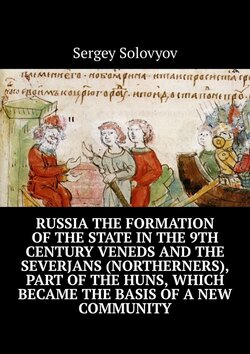Читать книгу Russia the formation of the state in the 9th century Veneds and the severjans (northerners), part of the Huns, which became the basis of a new community - Сергей Соловьёв - Страница 25
Migration of Indo-Europeans to the West, East and South
Abashevskaya culture
Weapons, decorations
ОглавлениеThe horse was a common and important character among the decorations characteristic of bronze combat knives. A stocky horse with a thick mane, large head and sensitively alert ears froze on the top of a crooked knife. A short man grasped the reins tightly and glides on widely spaced skis. This, already famous, sculptural group from the Rostovka burial ground points to one of the most ancient ways of man’s movement in tow after a fast-jumping animal.
Statuette, a man rides a horse on skis
Elk was also a domestic animal in Siberia. It is known that, until recently, sled and draft moose were widely used in northern Europe. Moreover, it is difficult to say who – an elk or a deer – was tamed before. So, back in the XV century. The moose was a riding animal in the Swedish army, and an engraving from the book of O. Mangus in 1555 depicts an elk carrying a sled with riders. Russian and Soviet zoologist, academician N.M. Kulagin wrote that “according to old legends, moose were allegedly used in Sweden for riding, as if riding on them was so fast that the police had to prohibit the use of moose in order to prevent criminals from hiding from persecution with the help of swift moose”; He also points out that moose in captivity in a stall, if not driven and not allowed to run, die after 2 years, and when used under saddle and harness live up to 35 years. In the 18th century. Swedish couriers used to ride moose in a sleigh, and in the Baltics from the time of Peter the Great, a decree has been preserved prohibiting “moose riding in the city”.
Images of petroglyphs of the White Sea region. A man is skiing for a moose, holding on to the harness.
That is, earlier people as mounts, in the Bronze Age and later used the moose as draft and riding animal. An elk is much larger than a horse, and even a deer, but it does not tolerate heat at all.
Genetic studies of the remains of the Andronovites showed the presence of Y-chromosomal haplogroup R1a1, R1b M73, Q1a and Y-chromosomal haplogroup C (prd M48) and mitochondrial haplogroups U, Z, T, H, K and HV in representatives of the culture. In one 2015 study, the Y-chromosomal haplogroup R1a1a1b2a2-Z2124 and the mitochondrial haplogroup U2 were found, in another 2015 study, the mitochondrial haplogroup A10 * was found in a representative of the Fedorov culture (Tartas-1). The closest to the Andronovites were the representatives of the European Corded Ware culture and the Sintashta culture, as well as modern Indian populations, according to the study by Keyser C. et al. “Ancient DNA provides new insights into the history of south Siberian Kurgan people.”
What did all these peoples call themselves? I would venture to suggest that the Huns or the Ghans, or rather, the Hans, and this is confirmed by the myth of the Gannimede of Asia Minor. Tsar Hunei from Thessaly, as well as the names of the mounds in Russia and Germany, and in Russia it literally means “KUR-GAN” – “the possession of the Gans”, kur-possession, then the Cossack kuren, and the name of the city of Kursk. And in Germany there are also such “Hünegrab” – “grave of the hun (giant)” and “Hünebett” – “bed of the hun (giant)”. In Dutch also – Hunebed – a giant’s bed. It is very likely that it was at this time, and these peoples. Judging by the legends of the Narts and the legends of the Egyptians, the Huns-Hans were the mysterious Hyksos-kings-shepherds, because the cities founded by these tribes in the Nile Delta were named in honor of the distant ancestral homeland – Tanais (Tanis) and Avaris, and here on the historical stage The Uary-Avars, who became the ancestors of the present Avars, came out.
So fortified cities, boat-shaped buckets, axes with bushings of a certain type, meander, swastika, cross, and temporal lobular rings, as well as blackened dishes, ornaments in the form of volutes are all signs of Indo-Europeans who began their migration to the West, East and South from their homeland, Ob and Urals.
